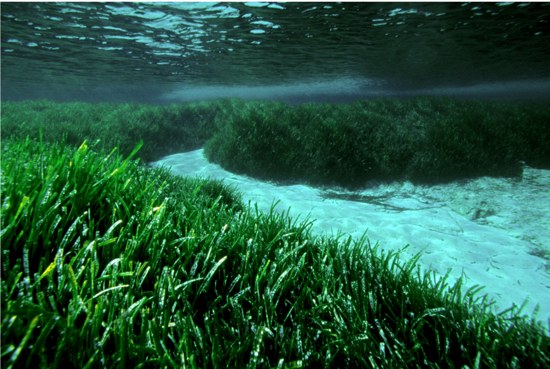Meet Posidonia oceanic, a type of Mediterranean seagrass that is also the longest-lived thing on Earth. What’s its secret? The usual — clean living, plenty of exercise, asexual reproduction, being 6,000 tons of grass, and not getting flattened by climate change … YET.
Researchers from the University of Western Australia have determined that patches of P. oceanic, some separated by more than nine miles, comprise what is to the best of our knowledge the oldest living thing on the planet. Analysis shows that the seagrass clusters (which are really all one organism that reproduces by cloning) are likely more than 100,000 years old, though they could be up to twice that ancient.
Prof Carlos Duarte, from the University of Western Australia, said the seagrass has been able to reach such old age because it can reproduce asexually and generate clones of itself. Organisms that can only reproduce sexually are inevitably lost at each generation, he added.
Obviously, these grass clumps have seen a lot. I get curmudgeonly about how phones didn’t used to have the internet and the internet didn’t used to have pictures, but the grasses may well have been around when the planet didn’t used to have Homo sapiens. But they’re not so resilient that they aren’t being threatened by climate change.
Prof Duarte said that while the seagrass is one of the world’s most resilient organisms, it has begun to decline due to coastal development and global warming.
“If climate change continues, the outlook for this species is very bad,” he said.



